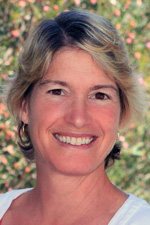By Eva Trieger

SOLANA BEACH, California — It comes as no surprise that we inhabit an unequal world. We have only to look around us to see that there are those blessed with material goods, living in areas where services are accessible and abundant, contrasted with those who lack even the essentials such as food and shelter. Here in America, as in most developed nations, we seldom consider what it means to have no constant clean source of water or minimal medical services. In Ethiopia, this is the norm.
Passion River Entertainment and Section 3 Films literally opens our eyes to the crisis in Ethiopia, and one amazing man’s valiant efforts in a documentary film The End of Blindness. After watching this incredible film and learning about the efforts of Dr. Samuel Bora, I still had trouble wrapping my head around the sheer number of blind or visually impaired people living in sub-Saharan Africa. Ethiopia reports nearly four million cases of visual impairment. The impact of this staggering figure goes well beyond the individual. “The great tragedy of blindness is that a child is often indentured to years of servitude leading the blind person day and night. Such children cannot attend school or play with other children. They are robbed of their childhood.”
Enter Tropical Health Alliance Foundation (THAF). In 2006, Dr. Larry Thomas joined forces with Mayo Clinic’s Dr. Peter Smars to establish THAF in order to develop “simple solutions for complex problems” in Ethiopia. With support from other non-profits, the all-volunteer organization focused on areas of critical need in this extremely impoverished country. This heartbreaking documentary is laser-focused on the issue of the overwhelming instance of blindness in this region.
I asked director A.J. Martinson to help me understand why Ethiopians suffer from cataracts so disproportionately. In a telephone interview, he shared that there are a few reasons. Firstly, the proximity to the equator and strong sunlight is a major culprit. Secondly, lack of access to clean water causes dehydration, aggravated by flies. Where the average American uses 100 gallons of water a day, most Ethiopians use only two to five gallons daily! Finally, the lack of medical care available creates the perfect environment for cataracts to linger and crystallize so that a 27-year-old had the lenses of a 70-year-old.
THAF wanted to do the very best they could to “provide for the poor” but they lacked a man on the ground who knew the countryside and the people. Dr. Samuel, as he is known, was born at Aira Hospital. As a young boy who showed great dedication to his education, Dr. Samuel walked barefoot on dirt roads to get to school and often worked weekends at school to offset his tuition. Two Lutheran missionaries from Finland were impressed by his drive and Raimo Tuppurainen and Sister Pirkko were determined to pay for his education. Tuppurainen even drove cabs at night to earn money for Dr. Samuel’s medical school costs.
After receiving his medical degree and training, Dr. Samuel wanted to give back to the people of Ethiopia. While working at an eye clinic a nun noticed his great skill and compassion and wanted to set up a meeting between Dr. Thomas and Dr. Samuel. When the two met, it was apparent they were “kindred spirits, sharing ethos and diligence.” Dr. James Guzek’s Rotary Club funded the project and immediately Dr. Samuel had an operating room, necessary equipment, and his mobile eye clinics were established.
The documentary contains so many beautiful moments where Dr. Samuel removes patients’ bandages and their sight is restored. In fact, 99% don’t even need glasses for distance. Their lives are reimagined. Fully 80% of those post-operatively were gainfully employed again. Perhaps one of the most poignant examples was that of Lalise, a 23-year-old patient who’d been blind for many years. She had never seen her four-month-old son until Dr. Samuel operated on her.
Dr. Samuel’s unit performs approximately 60 cataract surgeries a day. The surgeries are provided at little or no cost to the patients and cost only $50 for THAF to sponsor. Each patient has the eye meticulously measured, a nerve block administered, and after a five-minute surgery, is bandaged and on his way. The patient returns, and after the bandage is removed, he experiences such elation, freedom, and gratitude. It is truly miraculous.
But what about the patients who live in rural areas or have no way to reach the eye clinic? AJ described the seven-passenger van that carries 1,000 pounds of equipment. Dr. Samuel and his small team spend two weeks driving around the countryside performing surgeries in these “eye camps.” This circuit is repeated over and over again as the doctor spends two weeks in Addis Ababa and two weeks on the road. I am bowled over yet again when the director tells me that Dr. Samuel is the only ophthalmologist for over 3,000,000 people. Martinson shared that as a comparison San Bernardino has 134 ophthalmologists to 2 million people.
The film is a beautiful testament to the human spirit and a reminder of what we are capable of when we work together towards an end goal. The 55-minute documentary is worth seeing more than once as it is filled with surprising statistics, but more because it is suffused with compassion in motion. The film may be ordered at TheEndofBlindness.com, and will begin on-demand streaming November 16th, 2021. See the trailer https://vimeo.com/588984812.
*
Eva Trieger is a freelance writer based in Solana Beach.
Thanks for the wonderful article Eva!